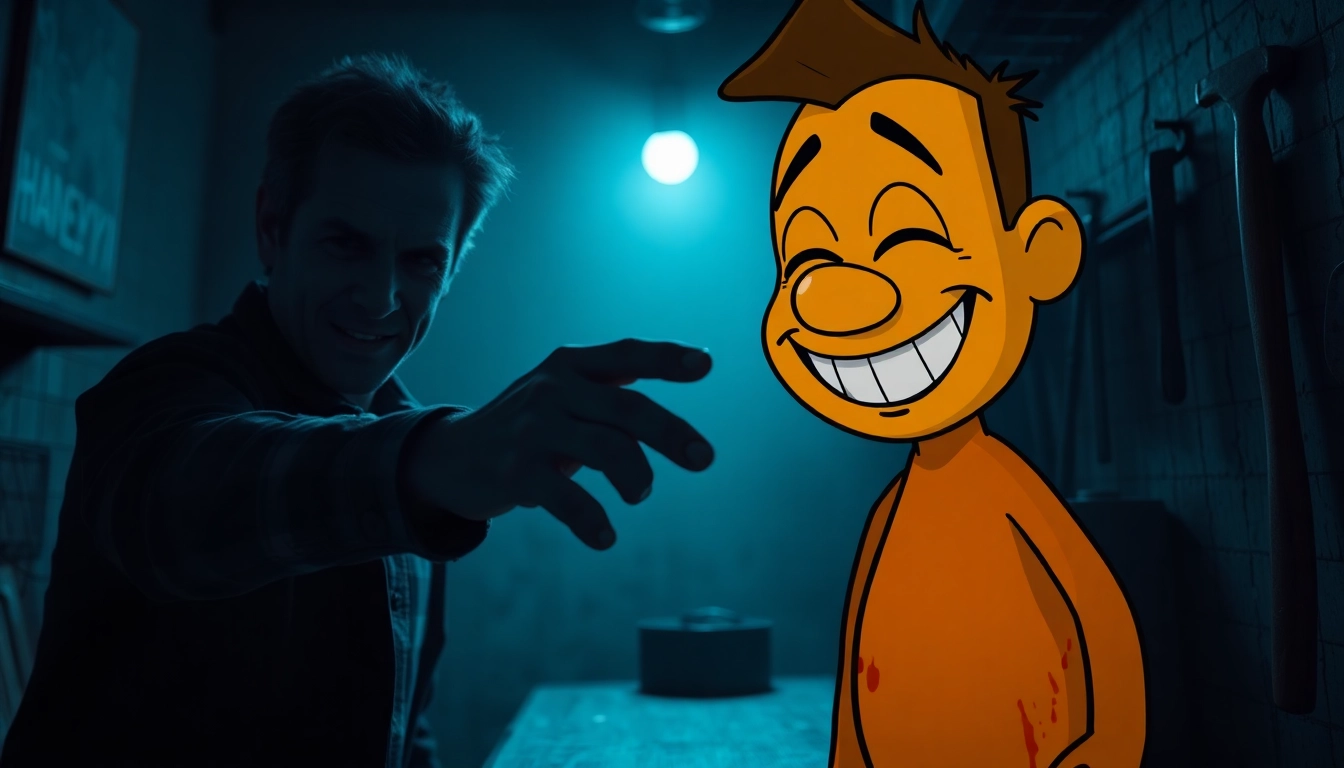
Overview and Context: BloodMoney – A Dark Psychological Clicker Experience
Welcome to the disturbing and morally challenging world of blood money, an indie psychological horror clicker game that pushes players into the depths of human morality, survival instincts, and psychological endurance. Unlike traditional horror titles that rely solely on jump scares or gore, BloodMoney immerses players in an intense moral dilemma: how far are you willing to go when your life depends on your choices? This game masterfully combines addictive clicking mechanics with a deeply unsettling narrative, creating an experience that leaves players questioning their own values and boundaries. Whether you’re a fan of horror, psychological thrillers, or compelling storytelling, BloodMoney offers a unique blend of gameplay and thematic depth that makes it stand out in the crowded genre of indie horror games.
Gameplay Mechanics and Core Features
Clicking Mechanics and Earning Money
The core of BloodMoney revolves around simple yet addictive clicking mechanics. You play as a character diagnosed with a severe medical condition, urgently needing $25,000 for treatment. Your only means of earning money? Clicking on Harvey, a cheerful, seemingly innocent character who offers to generate income with each click. At first, each click on Harvey appears harmless, even humorous, as he cheerfully encourages you to click repeatedly. Every click earns you a dollar, propelling you closer to your financial goal. However, this innocent act quickly reveals its darker side as each click causes Harvey to endure increasing pain, suffering, and visual distress. The more you click, the more disturbing Harvey’s appearance and reactions become, subtly escalating the game’s unsettling atmosphere.
The Upgrade System and Tools
To accelerate your earnings, the game features a shop where you can purchase upgrades and tools. These range from innocuous items like pillows—implying harmless pillow fights—to increasingly violent tools like needles, hammers, and knives. Each upgrade not only boosts your clicking efficiency but also intensifies Harvey’s suffering, raising profound moral questions. The game cleverly ties the visual and emotional consequences to each upgrade; Harvey’s reactions grow darker, his expressions more pained, and the visuals more grotesque as the violence escalates. This creates a twisted risk-reward dynamic: do you maximize profits at the expense of Harvey’s suffering, or do you attempt to minimize harm even if it means slower progress? The upgrade system is integral to shaping your moral pathway and ultimately influences the game’s ending.
Multiple Pathways and Endings
BloodMoney doesn’t offer a one-size-fits-all conclusion. Instead, your choices and upgrade strategies unlock three distinct endings: The Good Ending, the Normal Ending, and the Bad Ending. Achieving these depends on how you balance profit with harm. For instance, choosing minimal harm—perhaps sticking to harmless tools like the scissors—leads to the Good Ending, where Harvey’s suffering is minimized, and you retain some moral integrity. Conversely, opting for more violent tools like the hammer maximizes your earnings but at a severe moral and emotional cost, culminating in the Bad Ending. The Normal Ending sits somewhere in between, often achieved by using tools like scissors but still pushing the boundaries of suffering. These multiple pathways challenge players to reflect on their moral compass and how their decisions shape their fate.
The Psychological Horror Experience
Visual and Emotional Design
BloodMoney excels in creating a deeply unsettling atmosphere through its visual and emotional design. As you click and purchase upgrades, Harvey’s appearance evolves—his cheerful demeanor fades, replaced by fear, pain, and helplessness. Subtle visual cues, such as trembling eyes, grimacing facial expressions, and increasingly grotesque imagery, evoke empathy and discomfort simultaneously. The game’s sound design further amplifies this tension, with unsettling audio cues and disturbing visual effects that heighten the emotional impact. The game’s minimalistic yet effective art style ensures that each change in Harvey’s appearance delivers maximum psychological impact, making players acutely aware of the moral implications of their actions.
The Moral Dilemma: Profit vs. Suffering
At its core, BloodMoney is a moral experiment. Every click and upgrade forces players to confront uncomfortable questions: How much suffering is acceptable for survival? Is it justified to cause pain if it means saving your life? The game intentionally blurs the line between innocent fun and moral depravity, pushing players to question their own boundaries. Each decision—whether to purchase a violent tool or to refrain—affects not only Harvey’s suffering but also the narrative’s direction. The game’s design makes it impossible to remain detached; players feel the weight of their choices through Harvey’s reactions and the visual decay of his character.
Harvey’s Character and Subtle Clues
One of the most fascinating elements of BloodMoney is Harvey himself. He appears genuinely cheerful and unaware of the true nature of the shop’s tools. Observant players have noted subtle clues hinting at this innocence, such as Harvey’s surprise at more violent tools like the hammer, which he initially expects to be something harmless like pillows. This detail adds a compelling layer of moral complexity: Harvey is not an antagonist but a victim of the darker forces controlling the shop. His innocence serves as a mirror to the player’s own moral struggle—do we exploit his naivety, or do we act with compassion? The game subtly explores themes of innocence, manipulation, and the human capacity for cruelty under extreme circumstances.
Narrative and Themes
The Desperate Situation and Moral Descent
The narrative of BloodMoney revolves around a desperate individual facing imminent death due to a serious medical condition. The urgency of raising $25,000 creates a high-stakes environment, compelling players to make morally questionable decisions. The game portrays how stress and desperation can erode moral boundaries, illustrating that in extreme situations, humans are capable of justifying acts they would normally condemn. The interaction with Harvey becomes a symbol of this moral descent—each click, each upgrade, pushes you further into ethically gray territory, questioning whether survival justifies any action.
Hidden Depths and Player Choices
Beyond the surface, BloodMoney offers hidden depths through subtle narrative cues and player choice tracking. The game subtly records how often you use violent tools, how much Harvey suffers, and your overall approach. These choices influence not only the ending but also the emotional experience. For example, even when using the hammer, some players have managed to unlock the Good Ending by deliberately minimizing Harvey’s suffering in other ways. This nuanced design encourages experimentation and introspection, allowing players to explore different moral pathways and see the consequences firsthand.
The Reflection on Human Nature
BloodMoney acts as a mirror to human nature, asking whether we are inherently good or evil when faced with survival challenges. Harvey’s innocence contrasts sharply with the dark tools available in the shop, symbolizing the duality of human morality. The game suggests that under pressure, even seemingly empathetic individuals can be driven to commit acts they might regret, raising profound questions about morality, empathy, and the human condition. It pushes players to consider whether their actions are driven by necessity, greed, or moral conviction, making each playthrough a deeply personal reflection.
Community Insights and Player Reactions
Emotional Impact and Moral Reflection
Many players report feeling a profound emotional impact after playing BloodMoney. The game’s ability to evoke genuine empathy for Harvey, despite his digital nature, demonstrates its emotional potency. Players often describe experiencing guilt, discomfort, and even introspection about their own moral choices. The game’s subtle storytelling and visual cues make it a powerful tool for moral reflection, illustrating how context and desperation can influence ethical boundaries. This emotional engagement makes BloodMoney not just a game but a psychological experience that lingers long after the screen is off.
Strategies for Achieving Different Endings
Players have developed various strategies to unlock the three endings. To achieve the Good Ending, many focus on minimizing Harvey’s suffering—avoiding the most violent tools and opting for less harmful upgrades like scissors. The Normal Ending often involves a balanced approach, using moderate violence but not pushing to the extreme. The Bad Ending requires maximizing profit through violent means, including the hammer or knife, regardless of Harvey’s pain. Interestingly, some players have discovered that even with violent tools, certain choices—like reducing clicks or avoiding unnecessary suffering—can influence the final outcome. The game’s subtle tracking of actions encourages experimentation, making each playthrough a unique moral exploration.
The Broader Context of BloodMoney in Gaming
Comparison to Similar Titles
BloodMoney stands out among psychological horror and clicker games for its intense moral focus and emotional depth. Unlike typical idle or clicker games that prioritize efficiency and progress, BloodMoney uses its mechanics to explore complex themes of morality, suffering, and desperation. Compared to other dark-themed games like “The Last of Us” or “Silent Hill,” which rely on narrative horror and atmosphere, BloodMoney’s minimalistic gameplay intensifies its psychological impact by forcing players into morally ambiguous decisions with each click. Its unique approach to storytelling and gameplay design places it in a niche of thought-provoking indie horror titles.
The Unique Place in Psychological Horror
What makes BloodMoney particularly compelling is its ability to transform a simple mechanic—clicking—into a vessel for moral and emotional exploration. Its focus on internal conflict and the human capacity for cruelty underpins its reputation as one of the darkest and most unsettling psychological horror experiences in recent years. The game’s minimalist presentation, combined with its profound thematic content, ensures that players are not just passive observers but active participants in a moral experiment. This innovative approach cements its place among groundbreaking psychological horror titles that challenge perceptions and evoke genuine emotional responses.
Conclusion: Confronting Morality in a Dark, Twisted World
BloodMoney offers more than just a disturbing gameplay experience—it forces players to confront their own morals and the boundaries of human decency. Through its simple yet powerful mechanics, subtle visual storytelling, and profound thematic depth, the game explores the unsettling question of how far one is willing to go for survival. Harvey’s innocence juxtaposed with the violent tools of the shop creates a compelling moral dynamic that keeps players engaged and introspective. As you progress, you realize that every decision, every click, reflects larger questions about human nature: are we inherently good or evil when faced with desperate circumstances? The game’s multiple endings serve as a testament to the complex moral landscape we navigate daily, amplified in this dark and twisted universe.
Connect With Us and Explore More Unsettling Experiences
Thank you for exploring the dark depths of morality with us through this detailed examination of blood money. If you enjoyed this psychological journey, stay tuned for more unsettling experiences and in-depth analyses of horror and moral dilemmas in gaming. Whether you seek further exploration into similar titles or want to discuss the moral questions raised by BloodMoney, we invite you to connect with us and continue the conversation. Remember, in the world of blood money, every click counts—what will your choices say about you?




